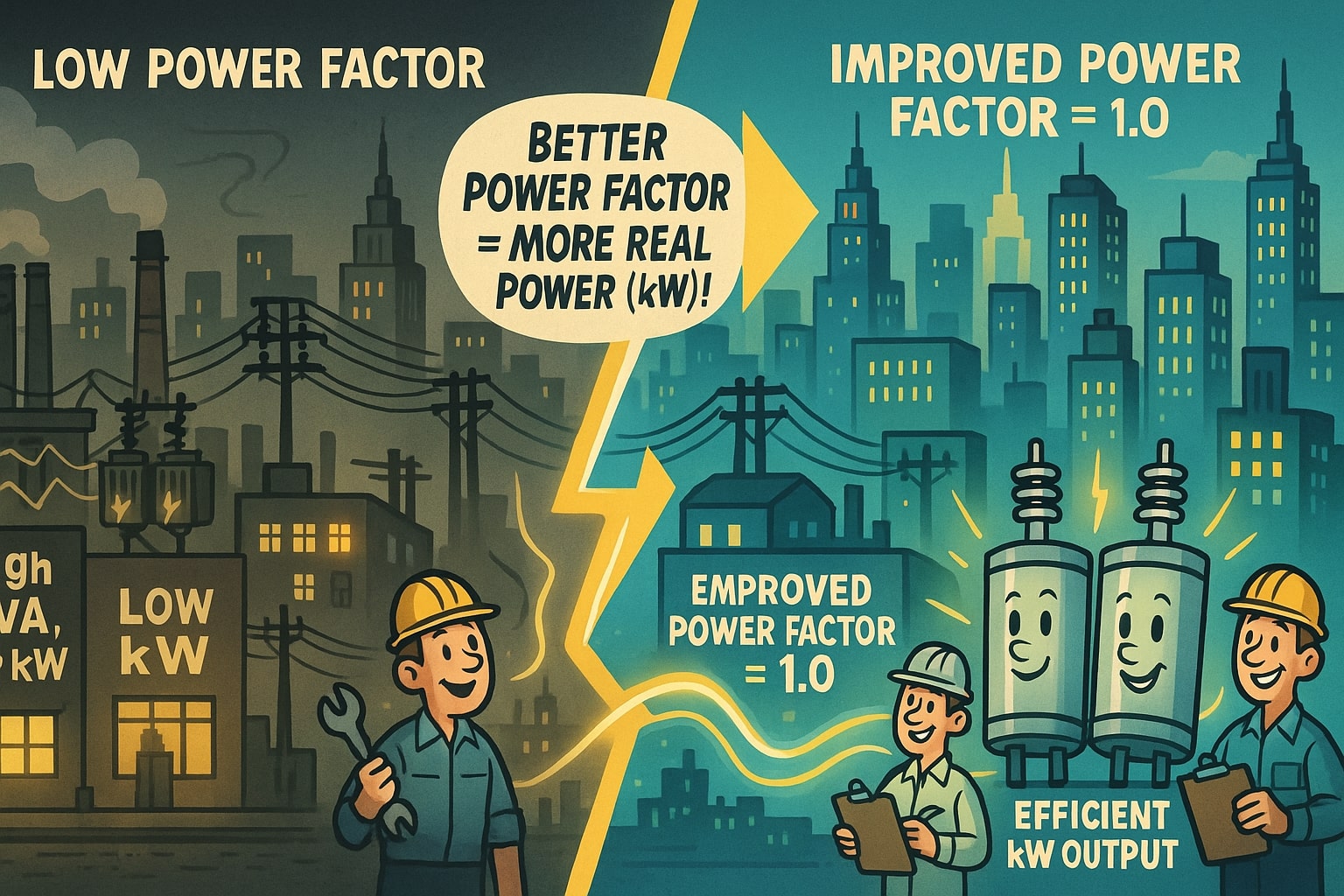kilovolt ampere to kilowatt – How to convert kVA to kW
In electrical engineering, kilovolt ampere (kVA) and kilowatt (kW) are two important but distinct measures of power. While kVA refers to apparent power, kW refers to real power — the actual usable energy. Converting kilovolt ampere to kilowatt helps determine how much of the supplied power can actually perform work in devices, machinery, or buildings.

What is a kilovolt ampere (kVA)?
A kilovolt ampere is a unit of apparent power, calculated as voltage × current. It does not consider efficiency losses from heat or reactive power. Electrical equipment like generators and transformers are typically rated in kVA.
What is a kilowatt (kW)?
A kilowatt is a unit of real power, the portion of electrical energy that performs useful work. Household appliances, industrial machines, and lighting systems are rated in kW.
How to convert kilovolt ampere to kilowatt
The conversion depends on the power factor (PF), which measures efficiency:
Kilowatt (kW) = Kilovolt ampere (kVA) × Power Factor (PF)
Example:
If a generator delivers 100 kVA at 0.8 power factor:
Kilowatt = 100 kVA × 0.8 = 80 kW
To simplify, when PF = 1 (perfect efficiency):
1 kVA = 1 kW
For instant calculations, the Conversion Tools on Jetcalculator make kVA to kW easy. Related calculators like the Speed Converter are also available.
Do you know?
-
About kVA: Large office buildings often install backup generators rated in kVA, since it shows the maximum apparent load the generator can supply.
-
About kW: Data centers track their consumption in kW because it reflects the real energy used by servers, cooling systems, and lighting.
When Power Factor Saved a City Grid
In the 1960s, New York City faced repeated blackouts due to growing electricity demand. Engineers discovered that many factories were operating at a low power factor, meaning their equipment was drawing high kVA but delivering far less kW of useful work.
By installing capacitors and improving efficiency, factories raised their power factor closer to 1. This allowed the same grid infrastructure to deliver more real power (kW) without adding new generators. The simple relationship between kVA and kW played a crucial role in stabilizing the city’s electricity supply.

Real Power in Everyday Life
The formula is straightforward: multiply kVA by the power factor. But converting kilovolt ampere to kilowatt reminds us that not all supplied energy becomes useful energy. From factories to office buildings, this conversion ensures we understand the difference between total capacity and actual performance — a key factor in designing efficient electrical systems.

